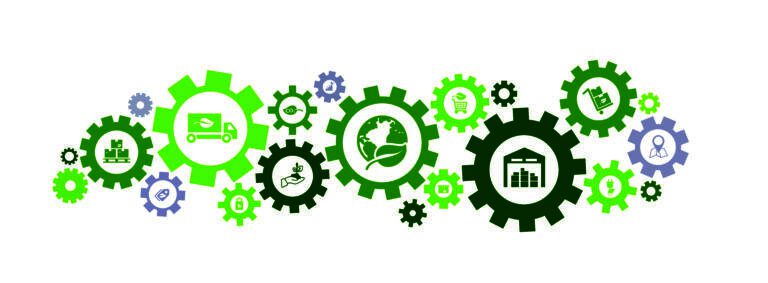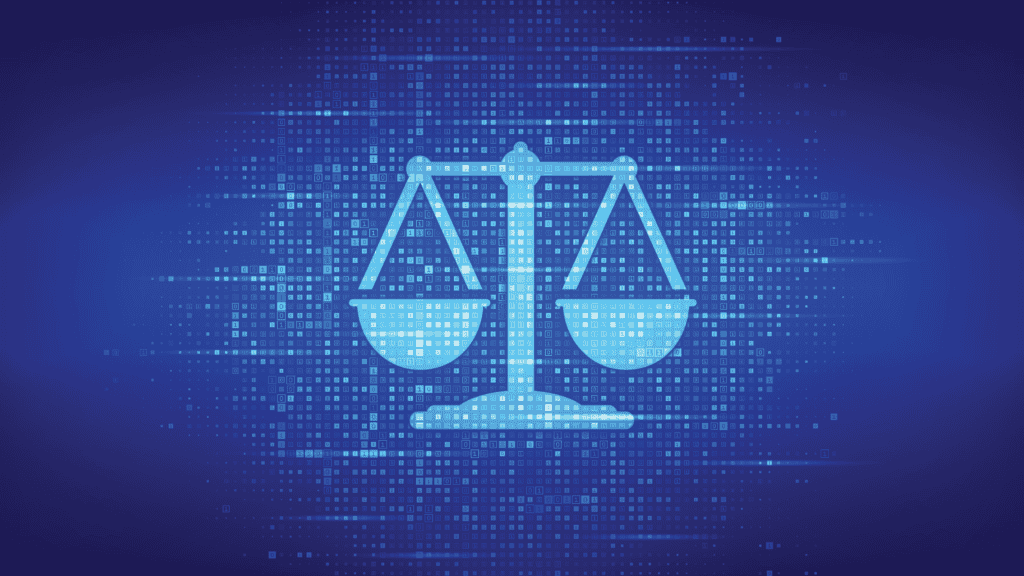
The global business landscape has entered two paradigm shifts:-
- Industry 4.0, which is underlined by digitization of industries and leveraging of data analytics, automation and disruptive technologies.
- The need for Climate oriented solutions which mitigate the increasing impact of climate change.
Digital transformation and sustainable transformation are equally essential for businesses to remain competitive, create value and contribute to economic growth.
Digital and sustainable transformations can be effective drivers of:
- Value creation: Digitization allows for better understanding of value required by a stakeholder. It also allows for better, faster and easier delivery of value. A sustainability strategy holistically considers long term impact on all stakeholders including the Environment and society towards creating shared value.
- Innovation: Digital and sustainability promote new approaches to solving problems, creation of new business models, as well as new skills. [1]. They also foster opportunities for open innovation and collaboration.
Both transformations present several opportunities for businesses.
Moreover, businesses formulate more effective solutions when they combine digital and sustainable transformation strategies.
These strategies have the power to strengthen and complement one another.
According to the United Nations Environment Programme (UNEP), there are two approaches to combining digital and sustainable transformation:-
1. Digital technologies can be used towards achieving sustainability goals. UNEP defines this approach as Digitalization for Sustainability. [2]
2. Sustainability can be considered in design, development and usage of digital technologies. UNEP defines this approach as Sustainable Digitalization. [2]
How can digital technologies help in achieving sustainability goals?

Digital technologies advance sustainability in various aspects of global value chain as follows:-
- Sustainable product design:
Digital technologies provide unprecedented access to information and data-driven analytics. These can be used to implement circularity in design decisions such as choice of material, functionality and length of life cycle.
Digital twins can be used to test sustainability KPIs of product designs efficiently. For example, Schneider Electric builds digital twins of its medium- and low-voltage switchgears to carry out simulations and analyze possible performance over the product lifecycle.

The design is then adjusted to meet desired sustainability KPIs accordingly prior to manufacturing. [3]
- Responsible supply chain:
Digital data driven insights can help create a climate-resilient and responsible supply chain. According to IBM, generative AI can help identify opportunities for waste and emission reduction in a supply chain through optimization algorithms. [4] Another example is of Dutch chocolate company Tony Chocolonely which uses a cloud-based platform named Beantracker to ensure traceability in their supply chain. The platform tracks the supply of cocoa beans from West Africa to the company’s production facilities in Europe, helping Tony Chocolonely create a responsible supply chain.[5]

Digital makes global supply chains visible. This enables transparency – a key factor for sustainability and performance improvement.[6]
- Increased production process & resource efficiency:
Digital organization and visualization of vast amount of data make it easier for businesses to analyze their processes and resource efficiency. This helps businesses make better decisions towards improving efficiency.
Automation and digital sensors also help improve energy and resource efficiency by automatically addressing inefficiencies in resource consumption and processes.

Horizon Pulp & Paper Ltd.’s Biomass powered Combined Heat & Power Plant is fully automated – helping improve resource and energy efficiency. The entire plant is operated by one person who makes decisions based on data insights on a visualization platform in the control room.
- Fostering an inclusive economy:
Digital platforms can bring down barriers and allow previously marginalized groups to participate in the global economy. E-commerce platforms have created access for rural Micro-, Small, and Medium sized Enterprises (MSMEs) to global marketplaces. E-payment platforms have paved way for financial inclusion.

While digital technologies help advance sustainability goals, they could also have counterproductive effects on sustainability. Emissions due to high energy consumption and governance risks are some of the most common counterproductive effects.
Dr. Tilmann Santarius, professor of Socio-Ecological Transformation and Sustainable Digitalization at Technische Universität Berlin, states the following in a TED Talk:
“As much digitalization as necessary and as little as possible” [7]
While digitalization is imperative, the design, development and use of digital technologies should be carried out with sustainability, efficiency and responsibility in consideration.
How can Sustainability be considered in designing, developing and using digital technologies?
Some ways to incorporate sustainability in digital technologies are:-
- Green computing
Green computing is the practice of designing, manufacturing and using digital technologies towards consumption of less energy. There are several actions that can be carried out as part of green computing. Green coding, for example, refers to writing code for software in a way that the software, once developed, consumes minimum energy possible when used.[8] Cloud computing, when carried out correctly, can reduce the amount of data transferred over a network – thus reducing energy consumption of the network. Use of Renewable energy to power IT infrastructure components such as data centers will also reduce emissions.

- Optimized use of digital technologies
Use of digital technologies should be managed in a way that they are utilized only when it is required. The frequency and amount of data transfer and storage should be carried out optimally and efficiently.
- Consideration of governance and inclusion principles
Digital technologies such as AI can lead to governance related risks such as algorithmic biases, data misuse and mass surveillance if equity and fairness are not considered in the development and use stages.[9] For example, Dutch government’s AI-oriented welfare fraud detection system, Systeem Risico Indicatie (SyRI), had biased algorithms targeting lower socio-economic status and minority-background neighbourhoods.[10] SyRI was eventually deemed unlawful in Dutch courts for non-compliance with the right to privacy under European Convention of Human Rights.

Governance gaps and principles of inclusion should be considered during the development and use of digital technologies.
To conclude, Digital and Sustainable transformations offer various opportunities for businesses. By combining the two transformations, businesses can potentially maximize the advantages and minimize risks presented by the two transformations.
The future lies in enacting a dual approach of Digitalization for Sustainability and Sustainable Digitalization. This dual approach should be ingrained in the organizational culture and decision-making process.
References
[1] Robertsone, G. and Lapiņa, I. (2023) ‘Digital Transformation as a catalyst for sustainability and open innovation’, Journal of Open Innovation: Technology, Market, and Complexity, 9(1), p. 100017. doi:10.1016/j.joitmc.2023.100017.
[2] Digitalization for Sustainability. UNEP. Available at: https://www.unep.org/topics/digital-transformations/digitalization-sustainability (Accessed: 12 July 2024).
[3] Thierry Cormenier (2024). How digital twins drive more environmentally conscious medium- and low-voltage equipment design. Schneider Electric Blog. Available at: https://blog.se.com/sustainability/2024/03/14/how-digital-twins-drive-more-environmentally-conscious-medium-and-low-voltage-equipment-design-2/ [Accessed 12 Jul. 2024].
[4] Ramos, M. (2024). How generative AI will revolutionize supply chain. [online] IBM . Available at: https://www.ibm.com/blog/how-generative-ai-will-revolutionize-supply-chain/.
[5] Binder, J. and R. Wade, M. (2024). Digital sustainability: The new frontier for greener technology and business. I by IMD. Available at: https://www.imd.org/ibyimd/sustainability/digital-sustainability-the-new-frontier-for-greener-technology-and-business/.
[6] Binder, J. and R. Wade, M. (2024). Digital sustainability: The new frontier for greener technology and business. I by IMD. Available at: https://www.imd.org/ibyimd/sustainability/digital-sustainability-the-new-frontier-for-greener-technology-and-business/.
[7] Santarius, T. (2021). Smart green world? Making digitalization work for sustainability. TED. Available at: https://www.ted.com/talks/prof_dr_tilmann_santarius_smart_green_world_making_digitalization_work_for_sustainability?subtitle=en [Accessed 12 Jul. 2024].
[8] IBM Cloud Education (2023). Why Green Coding is a Powerful Catalyst for Sustainability Initiatives. IBM . Available at: https://www.ibm.com/blog/green-coding/.
[9] Schoemaker, E. (2024). A Shared Vision for Digital Technology and Governance: The role of governance in ensuring digital technologies contribute to development and mitigate risk. New York: United Nations Development Programme.
[10] van Bekkum, M., & Borgesius, F. Z. (2021). Digital welfare fraud detection and the Dutch SyRI judgment. European Journal of Social Security, 23(4), 323-340. https://doi.org/10.1177/13882627211031257.
